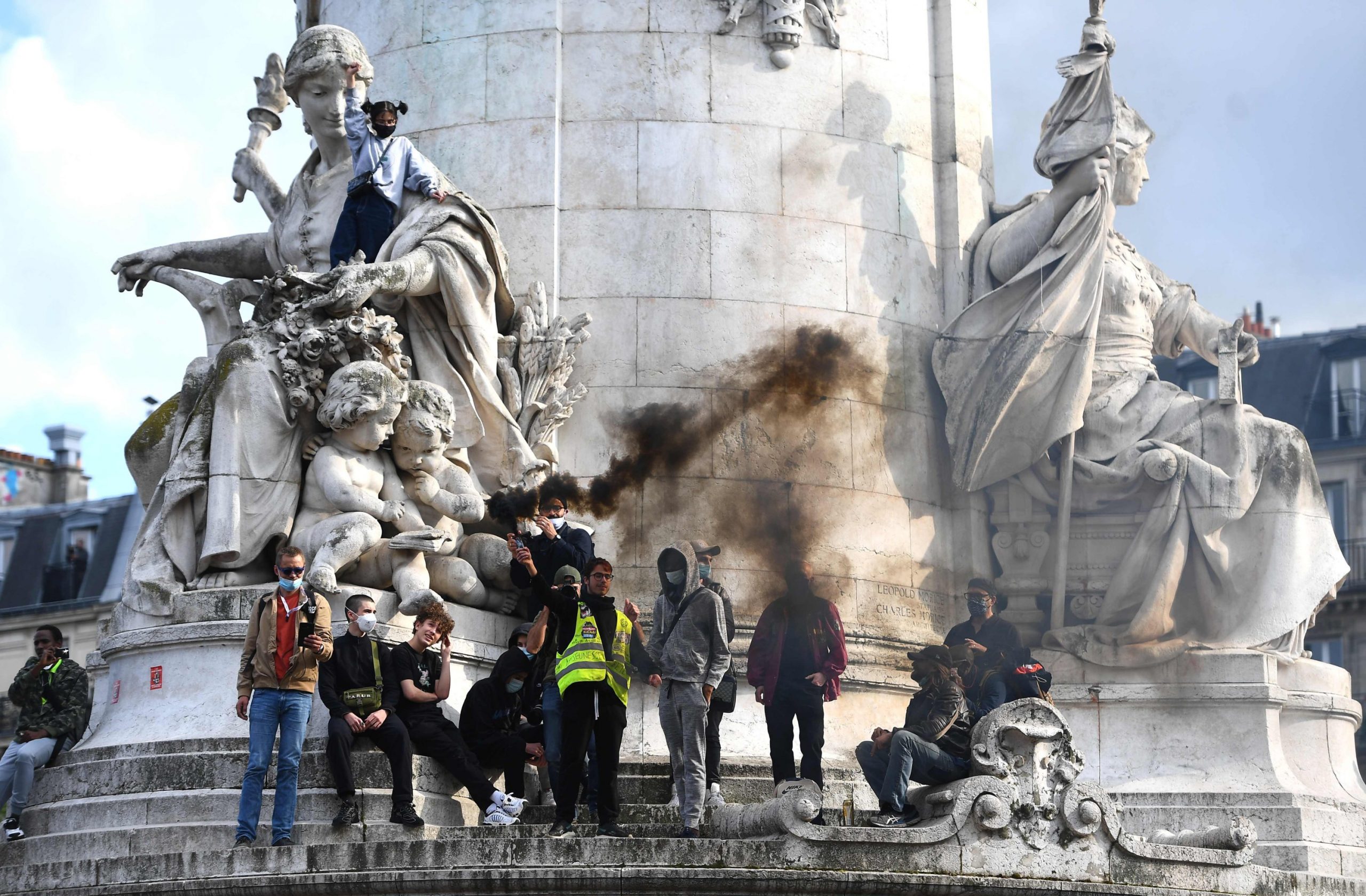The killing of a black American citizen during a routine police check has sent shock waves not just across the United States, but around the world.
In the U.S., this is, of course, not the first African American citizen who has fallen victim to police brutality. There has been a very well-established and well-oiled propaganda machine in operation in which any African American can be seen as a potential wrongdoer. Any film or TV series you find made in the U.S. will depict at least one or more criminals as black. Their stereotyped attire, with a profusion of colors, full-on chain necklaces and audacious caps are almost synonymous with wrongdoing. Anyone dressed up like this in a movie or TV show is thus seen by default as a potential gangster by the average spectator. Undoubtedly, the average police officer in the U.S. holds a similar view.
The propaganda works both ways, in that it is both extremely efficient and extremely dangerous. Just as the police will take on authoritative attitudes, so too will African Americans watching TV pick up on the mannerisms and styles of how they are depicted on screen. The need to differentiate oneself from the average, preppy, white Anglo-Saxon American helps consolidate these visual racist stereotypes.
Hollywood has taught practically everyone on the planet the taste of romance, bravery, fantasy, tragedy and more thanks to its immense contributions to culture. In the 1920s, 80% of movies made were produced in the U.S. This created an incredibly efficient tool in the hands of the U.S. after World War II. The “American Way of Life” was a by-product of the war years, not having existed as a concept beforehand. In fact, the pre-war U.S. was one of deep economic and social crises.
And yet, today, rather than indulge in tales of the incredible recovery brought about by the New Deal, or the bravery of hundreds of thousands of “boys” who came to save Europe from the Nazi nightmare, black and white alike, we mostly enjoy cop shows in which the drug dealers and assailants are primarily black Americans.
Racism is not an American product – far from it. Alas, it exists across the world. But the way the U.S. is plagued by racial issues, as reproduced in mass media, creates a feeling that racism is a standard norm there, and is suffered by all citizens with dark complexions. Yet not having a targeted African-origin minority community does not mean a country is free of racism. Not at all. Racism is much more pernicious and transmissible than this.
Speaking another language can establish a basis for racism. A young man in Turkey was stabbed to death very recently by three assailants on the grounds that he was singing a song in Kurdish. Kurds look very much like Turks, with similar lifestyles, religious beliefs, cuisine and the like. Yet a different mother tongue can make fertile ground for the eruption of racism. Meanwhile, their different religious adherence has created an immense wave of racist uprising against the Muslim population in the Balkans. Long before the terrible bloodshed in Sarajevo, in fact, the Bulgarian Communist regime, socially and economically in disarray, unlawfully deported hundreds of thousands of Bulgarian citizens of Turkish origin on the grounds that they refused to change their Turkish-sounding names to purely Bulgarian names.
Time has since passed, and excuses have been made at the highest level. Both countries have overcome these terrible incidences, but this shows us how resilient and potentially dangerous racism remains in its various guises.
The good thing is that in any human society, racist people are always in the minority – around 7%, I’d say. There is nothing that can be done to completely do away with these people; they will remain racist and xenophobic all their lives. Yet the remaining 93% is not racist, and this is an immense majority. So how are those racist and xenophobic policies implemented in different countries at different times?
Populism is the answer. Populist policies provide very fertile ground for racism. In times of economic and social instability, creating anxiety and fear among the population with populism can find many accommodating ears among the public opinion. A simple populist approach is to divide society into two: the “ruling” (or, often, “formerly ruling”) elites and the people. The elites are intrinsically bad and the people essentially good in accordance with this narrative. So, by attacking “elites,” populism can create an ideal scapegoat figure, which, in time, can turn into pure racism. The post-pandemic period will also be a period of struggle against populism. That struggle will be an uphill one for sure, as, for the time being, there is no humane, distributive, alternative policy that can be used to fight against it. How to create such a political alternative seems to be the essential debate in the short and medium term.










Discussion about this post